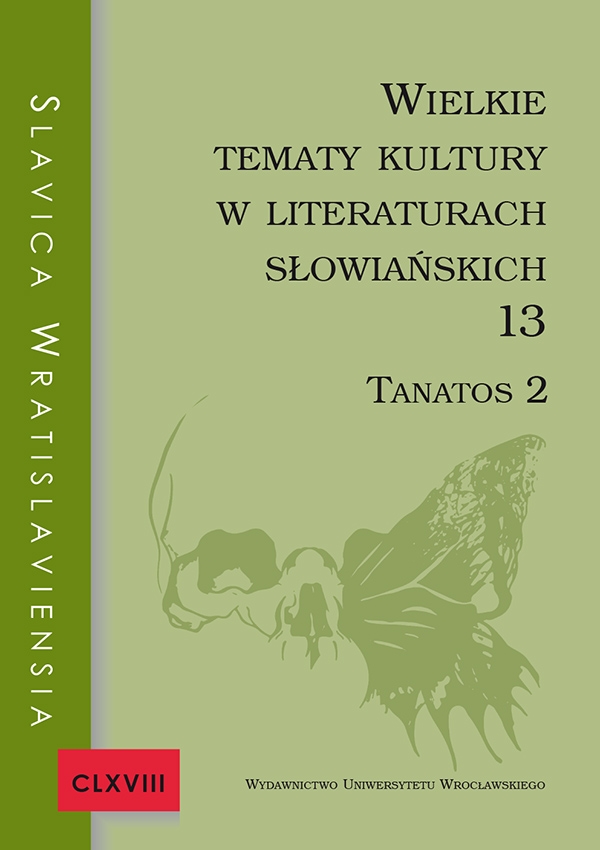

Literatury Słowiańszczyzny zachodniej

From emblematic allegory to symbolic hypotyposis: On the changes of depicting death in Czech poetry at the close of the 19th century
The paper is devoted to the analysis of depictions of death in Czech poetry created at the end of the 19th century. The author starts her deliberations from the poetry of the 1890s which was created in the spirit of realism. Then, she moves on to the deliberations about modernist poetry which — in this paper — is not considered as a homogenous whole. Starting from decadence, chronologically the earliest, through impressionism to mature modernism manifesting itself in symbolism, the author analyses the manners of depicting death and the figures of speech, pointing to the transition of portraying death from the emblematic and allegoric images of death to the symbolic hypotyposis. The author stresses the deconstruction of the traditional topos in modernism. This deconstruction involved a lack of references to an established set of images and thus to this linguistic ritual which had been active for ages. The Grim Reaper with a scythe could no longer be a simple symbol of death. In the times of modernism, poetry finally freed itself from those types of allegoric depictions. The deconstruction of the topos in its basic frameworks and in the most traditional ritualised formula forced poets to look for their individual languages, to create symbols which would not repeat the conventionalised allegories.
Od emblematické alegorie k symbolické hypotypóze — proměny zobrazovánί smrti v české lyrice na sklonu 19. století
Článek je věnován analýze zobrazování smrti v české poezii na sklonku 19. století. Autorka své úvahy otevírá poezií 80. let, která vznikala v duchu realismu, a následně přechází k pojednání o modernistické poezii, jíž však nevnímá jako monolitickou. Autorka chronologicky od nejranější dekadence, přes impresionismus až ke zralé moderně vyjadřující se symbolisticky analyzuje způsoby prezentace smrti a slovní figury poukazující na přechod od emblematicko-alegorických obrazů smrti k symbolickým hypotypózám v zobrazování smrti. Autorka ukazuje rozpad tradiční topiky v moderně, což s sebou nese skutečnost, že se básníci neodvolávají na ustálený soubor obrazů, tedy k takovému jazykovému uchopení, jež bylo po staletí živé. Smrtka s kosou již nemohla představovat jednoduchý symbol smrti. V době modernismu se poezie osvobozuje od tohoto druhu alegorických obrazů. Rozpad topiky v jejich základních rysech a jejích nejtradičnějších a ritualizovaných postav vybízel básníky k hledání individuálního jazyka, k vytváření takových symbolů, které nenásledovaly konvenční alegorii.